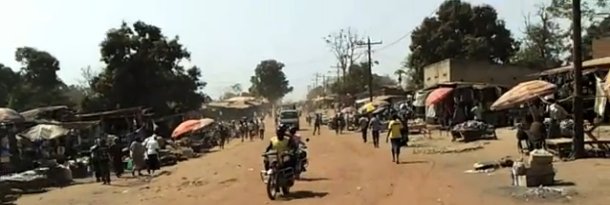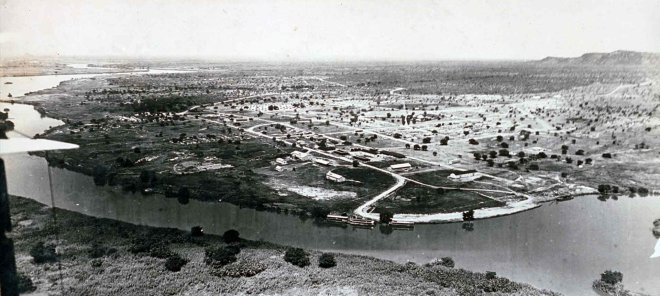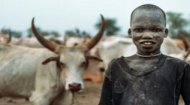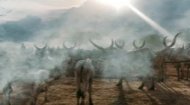Juba City Profile South SudanTags: Juba Profile, Juba City Profile, Juba Profile South Sudan, Juba Daily Life Video Profile, Juba Social Profile, Juba Economic Profile |
|
It was under British control that Juba began to take its modern shape. Recognising its strategic location as a river port and a gateway to Uganda and the wider East African region, the British established an administrative centre there. Juba quickly evolved into a crucial transport hub for river barges and a nexus for trade routes. Infrastructure development, albeit rudimentary, commenced with the construction of administrative buildings and a rudimentary port. This period saw the imposition of new governance structures, the introduction of new economic practices, and the integration of the local economy into a broader colonial system, fundamentally altering the lives and traditional practices of the indigenous population and setting the stage for Juba’s future growth. After the Second World War, Juba came to greater prominence when a conference was held there in which representatives of the northern and southern parts of the Sudan agreed to unify against the wishes of the British Government who had planned on what is now South Sudan becoming part of neighbouring Uganda. This unification though was seemingly doomed to failure with Juba becoming the home of southern resistance to northern domination over the following decades. Conflict was ongoing until 1972 then erupted again in 1983 however ended with the signing of the Comprehensive Peace Agreement (CPA) in 2005 which granted autonomy to the region of southern Sudan with Juba being named as the semi-autonomous regional capital. When the southern region of Sudan finally seceded in 2011, Juba became the capital of the newly independent country of South Sudan. Juba is home to the city's jail, police, banks and bureaus. Whilst Wizara Road hosts the city's parliament and government ministries as well as offices for UNICEF and other organisations, Malakia is the commercial and shopping sector of the city. Daily life in Juba is a study in adaptation and vitality. The city awakens early to the call to prayer and the sounds of commerce. The heat dictates the rhythm of the day, with the most intense activity occurring in the cooler morning and late afternoon hours. For many, the day begins with a trip to one of the city's bustling markets, such as the sprawling Konyo Konyo Market. Here, the social and economic heart of the city beats strongest. Vendors sell everything from fresh produce and spices to mobile phone credit and second-hand clothing, all amidst a cacophony of negotiations in Juba Arabic, English, and a multitude of local languages. |
Juba Profile |
Juba Profile |
Juba Profile | Juba Profile |
|
|

|
It would be fair to say, Juba is not currently a particularly attractive place to work or live. Rubbish is normally piled up on the streets and set fire to whilst the city itself is strewn with makeshift buildings made of bricks with tin roofs. The social profile of Juba is diverse, comprising people from all of South Sudan's numerous ethnic groups, each bringing their own traditions and customs to the urban milieu. This creates a unique and dynamic culture where traditional values meet modern aspirations. Tea shops are central to social life as are Ugandan and Eritrean restaurants as well as Kenyan food kiosks. Some have described Juba as one big construction site and locals speak ruefully of the influx of foreigners in recent years that have created a relatively cosmopolitan society. Indeed, Juba is on of Africa's fastest growing cities, not least due to the waves of Chinese workers who have moved there to help develop the area's oil industry. It is estimated that today Juba has a metro population of some 450,000 (2025), rising from 200,000 in just under ten years. European style casual dress is the norm. Nearly everything in Juba is shipped in by road with the construction of a highway from Juba to the Ugandan border facilitating this trade.
While not a traditional holiday destination in any sense, Juba offers a unique experience for a traveller seeking to understand a nation at its genesis. The city’s tourist attractions, such as they are, remain modest: The John Garang Mausoleum: This memorial honours Dr. John Garang de Mabior, the revered leader of the Sudan People's Liberation Army/Movement (SPLA/M), who died just weeks after signing the 2005 peace agreement. It is the city's most prominent landmark and a site of great national significance. The Nile River: The White Nile is the lifeblood of the city. A boat cruise at sunset offers a moment of tranquillity and a beautiful perspective of Juba. Riverside restaurants provide a place to relax and watch local life unfold along the banks. Juba Market (Konyo Konyo): For a truly immersive cultural experience, a visit to the main market is essential. It is a vibrant, chaotic, and sensory-overloading glimpse into the daily life and commercial spirit of the South Sudanese people. Juba Cathedral (St. Theresa's): As a symbol of faith and resilience for a predominantly Christian population, the cathedral is an important social and architectural landmark. Craft Shops and Cultural Centres: Small shops and centres showcase beautiful traditional handicrafts, including beadwork, carvings, and baskets, offering visitors a chance to take home a piece of South Sudanese culture. Also worth a look are All Saints Cathedral, St. Joseph's Catholic Church, the main Mosque and Juba Stadium. We recommend avoiding public transport in Juba as many drivers aren't qualified to be on the roads, pop-up illegal checkpoints manned by armed men are common place and women in particular are often physically absused. Road accidents are also common. To put this in context, South Sudan remains one of the most dangerous operating environments for aid workers in the world with regular incidents of violence, intimidation, arbitrary detentions and kidnappings being reported. A holiday destination of choice for the (very) few! The video of Juba (above) gives a good look and feel of the city. |






 Juba's economic profile is a tale of two cities. It is the seat of government and the headquarters for numerous non-governmental organisations (NGOs) and United Nations agencies. This sector provides a significant number of jobs and drives a service-based economy geared towards the international community, leading to a high cost for imported goods and luxury services. Alongside this exists a vast informal economic sector. Street vendors, motorcycle taxi (boda-boda) drivers, and small-scale traders form the backbone of the city's day-to-day commerce. The long-term economic potential of Juba and South Sudan as a whole is undeniable, resting largely on its vast oil reserves. However, harnessing this wealth for broad-based development, diversifying the economy into agriculture and other sectors, and ensuring that riches translate into improved daily life for all citizens remain the critical economic challenges ahead. The economic situation is difficult for many, with high costs of living, inflation, and unemployment presenting constant hurdles.
Juba's economic profile is a tale of two cities. It is the seat of government and the headquarters for numerous non-governmental organisations (NGOs) and United Nations agencies. This sector provides a significant number of jobs and drives a service-based economy geared towards the international community, leading to a high cost for imported goods and luxury services. Alongside this exists a vast informal economic sector. Street vendors, motorcycle taxi (boda-boda) drivers, and small-scale traders form the backbone of the city's day-to-day commerce. The long-term economic potential of Juba and South Sudan as a whole is undeniable, resting largely on its vast oil reserves. However, harnessing this wealth for broad-based development, diversifying the economy into agriculture and other sectors, and ensuring that riches translate into improved daily life for all citizens remain the critical economic challenges ahead. The economic situation is difficult for many, with high costs of living, inflation, and unemployment presenting constant hurdles.


